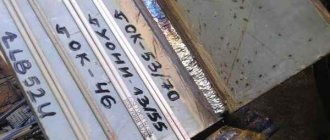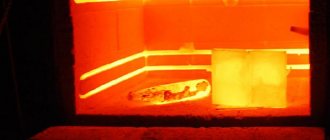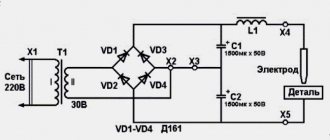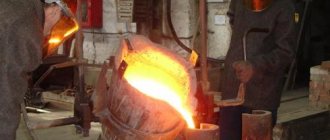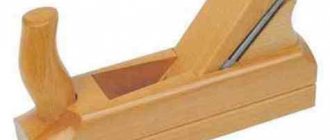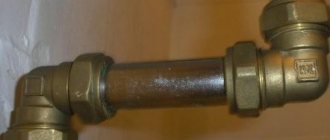Introduction
Electroless nickel plating and chemical metallization with silver by spraying are the most common and accessible technologies for applying a mirror metal layer.
Numerous calls, questions by email and feedback from the site from people interested in chemical metallization with various metals led us to the idea of writing this article. Its goal is not to denigrate any technology or, conversely, to extol something, but simply to dot the i’s.
Despite the abundance of information in various sources on the Internet, it is often contradictory, fragmented, and at times downright false. As a result, people go around in circles asking the same questions and making the same mistakes.
In this article we will consider chemical metallization with silver using the spraying method (on the Internet it is also called decorative chrome plating, silver plating, chemical chrome plating), chemical nickel plating using the FunChrome Nickel dipping method (solutions purchased from the supplier) and chemical nickel plating using the FunChrome Nickel teh technological process ( solutions are produced independently, complete independence from the solution supplier).
Comparison method
We will evaluate and compare using a whole range of parameters, remaining objective. When comparing, we made a number of assumptions:
1. Prices are taken from open sources on the Internet as of January 9, 2017.
2. We consider only the minimum requirements for organizing production necessary to ensure acceptable quality.
3. The technology of chemical metallization with silver is limited to the coating of dielectrics. If we are talking about chemical nickel plating FunChrome Nickel, then the scope of application of this technology is both dielectrics and metals. Moreover, as long-term practice shows, coating of metals and various products made from them is in much greater demand. Building a business on coating plaster figurines and plastic trinkets of various kinds (from jewelry to car parts) is a utopia. Therefore, we will consider the coating of metals and their alloys.
So let's get down to business:
1. Any work and production begins with the production premises, hence the requirements for it:
Chemical metallization with silver
Room from 20 m2. Divided into 2 zones - preparation of products and solutions, drying and other types of work, and the coating application area itself (both varnish and mirror layer) which is necessarily equipped with exhaust ventilation. Separation is necessary, since the scourge of all spray metallization methods are debris and dust particles on the surface of the applied layers - if there are many of them or they are large, then the coating is simply damaged.
Lighting – has everyone seen the lighting in paint booths? This is an analogue that you need to get started! Without high-quality lighting, it is simply impossible to work in the silvering industry! It is desirable to have heating (and the ideal temperature for the technological process of chemical metallization with silver is 20°C), since technological requirements and healthy working conditions come first!
So, let's move on to the most important factor - money.
In this case, the costs will be as follows: garage rental – 3,000 rubles/month. (one of the minimally acceptable ones based on the example of our Bryansk region);
exhaust ventilation - at least 4,000 rubles;
zoning costs (division into zones) are allowed in the amount of 3,000 rubles;
lighting - according to the most minimal estimates, it will cost 5,000 rubles;
heating costs are not only one-time costs (Buleryan stove with pipes and other things) - 11,000 rubles. – everyone knows that the heating season lasts 6-9 months a year (depending on the region) in Russia. Heating costs have always accounted for a significant share of the total costs in any production.
TOTAL: 26,000 rub. necessary for the most minimally acceptable conditions.
Electroless nickel plating
FunChrome Nickel: there are simply no requirements for the premises, its area, or equipment. The whole process can be carried out in almost any room - no harmful substances are released, garbage is not dangerous, specialized lighting is not required, since the process takes place practically without human intervention. There are also no temperature requirements. Since you can work anywhere, there are no rental costs (we work where there is space and opportunity), no, the dust is not terrible, no exhaust hood is needed.
So let's take the cost to be 0.
FunChrome Nickel teh: the requirements are the same as in the case of FunChrome Nickel. When production reaches the serial level, of course, you will need a room and, preferably, a hood. We accept rent for the same 3,000 rubles. and the cost of the hood is 4000 rubles.
TOTAL: 7,000 rub. – already when reaching certain volumes, and not at the very beginning!
Conclusion: Costs for preparing the premises:
Chemical metallization: 26,000 rub.
FunChrome Nickel : 0 rub.
FunChrome Nickel teh : 7000 rub. when reaching volume .
2. Costs for equipment and inventory necessary to start work (personal protective equipment, salinity meter, thermometer, suit, containers and other little things that are the same for all options under consideration, we will omit - they do not affect the comparison):
Chemical metallization with silver
Equipment for chemical metallization (minimum) (costs taken from the website of one widely advertised supplier) - 49,000 rubles;
compressor with receiver minimum 50 – 10,900 rubles;
air hose with connectors – RUB 3,400;
oil-moisture separator – 1600+2400=4000 rub.;
2 spray guns – 1700+4990=6690 rub.;
infrared heater with a power of 1 kW – 11,900 rubles.
TOTAL: 85,890 rub. Even assuming you can find all of the above cheaper, the amount turns out to be rather large.
Electroless nickel plating
Electric table tiles produced by ZLATMASH, Zlatoust DREAM 212CH – 2300 rub.;
enamel container with a volume of 40 l. – 2000 rub.
TOTAL : 4,300 rub .
The cost of the technological process itself is 30,000 rubles;
stainless steel bathtub with heating elements: RUB 14,000.
TOTAL: 44,000 rub.
Conclusion: The costs of equipment and inventory are:
Chemical metallization: RUB 85,890.
FunChrome Nickel : 4300 rub.
FunChrome Nickel teh : 44,000 rub.
3. Cost of materials for covering 1 m2:
Chemical metallization with silver
The average cost of materials was 1021 rubles/m2 (costs taken from the website of one widely advertised supplier). The only way to radically reduce costs is to purchase a technological process with independent preparation of working solutions.
Electroless nickel plating
FunChrome Nickel: the cost of a ready-made set of materials is 7,000 rubles. and a coverage area of 50 m2., but for the purposes of this calculation we will take the coverage area to be 25 m2. (2 times thicker than the nominal thickness). By simple calculations we get: 7000/25 = 280 rubles/m2.
Cathodic processes during electrodeposition.
Electrodeposition of iron group metals from solutions of simple salts has a number of features compared to other metals. The discharge of metal ions occurs at high cathodic polarization and low hydrogen overvoltage, which creates certain difficulties, since hydrogen is released at the cathode simultaneously with the metal:
Ni2+ + 2e- → Ni0
2H+ + 2e- → H2
Förster made a major contribution to the study of the kinetics of nickel electrodeposition. He and his co-workers found that the polarization curves of deposition of metals of the iron subgroup are logarithmic in nature. In this case, significant cathodic polarization is observed even at low current densities.
Initially, it was believed that nickel deposition potentials depended on the pH of the environment—as the pH decreased from 5 to 2, the potentials should have become increasingly negative.
Glaston denied these assumptions. He found that in a buffered solution of nickel sulfate, the polarization curves always slowly rise to -0.57 V, and then rise sharply. Experimentally, at 15°C, from a 1N solution of nickel sulfate, the metal begins to precipitate on the copper cathode precisely at -0.57 V. At other temperatures, the potential for nickel release shifts to a more negative region. According to Glaston, pH does not affect the potential for nickel release. When pH decreases from 5, only a shift in the sharp rise in the polarization curve (the beginning of metal release) to higher values of current density is observed. This fact turned out to be similar for iron and cobalt.
Thus, Glaston concluded that during the deposition of nickel the process is not controlled by a slow discharge. In his opinion, significant cathodic polarization is observed only before the precipitation of the metal begins; subsequently, the polarization slightly exceeds that which occurs during the deposition of lead or copper.
All of the above is illustrated in the polarization curves in Figure 2.
Figure 2 - Polarization curves in a 1N solution of nickel sulfate at different pH values. Temperature 15o C: 1 - 0.5N sulfuric acid; 2 - pH = 2.8; 3 — pH = 4; 4 — pH = 5; 5 - pH = 6.
An increase in temperature naturally reduces polarization. On the curves this is expressed in a steeper course (Figure 3).
Figure 3 - Polarization curves in a 1N solution of nickel sulfate. Temperature 95o C: 1 - pH = 2.8; 2 — pH = 4; 3 — pH = 5; 4 — pH = 6; 5 - pH = 6 (nickel-free).
It can be seen that in solutions the cathode potential, after reaching a value of -0.57 V, changes slightly further with increasing current density. At the same time, in the absence of nickel ions in the solution, no break in the polarization curve is observed. When replacing sulfates with acetates, chlorides or nitrates, the break potential of the polarization curve remains unchanged (-0.57 V at 15o C). A change in the nickel concentration in the solution by 0.01N resulted in a potential shift of -0.06V. A change in temperature to 55°C shifted the kink potential to -0.43 V, and an even greater increase in temperature (up to 95°C) shifted the kink potential to an even more positive region (up to -0.29 V). Thus, according to Glaston, at temperatures of 15o, 55o, 95o C cathodic polarization, the polarization at the initial moment of nickel release is 0.33, 0.19 and 0.06 V, respectively, and the pH value does not affect the potential of metal release. However, as the pH decreases, the current density at which this potential is reached significantly decreases (which contradicts Kolshuter's theory).
Glaston, in addition to studying polarization during nickel deposition, was the first to notice that electrolytic nickel is deposited in a very nonequilibrium form, different from metallurgical one.
Förster drew attention to the fact that Glastnom made a significant mistake - the potential values for a given current density were recorded on the basis of short-term observations, during which these potentials were not sufficiently stabilized. In addition, not enough attention was paid to protecting the cathode space from oxygen access. Having eliminated these shortcomings, Förster managed to obtain nickel at 16°C from a 1N solution of nickel chloride at a potential of -0.42 V. In sulfate solutions, nickel began to precipitate at a potential of -0.50 V, i.e. 0.07V less negative than Glaston indicated. The nature of the anion according to Förster influenced the potential for nickel release—in sulfuric acid solutions it turned out to be more negative.
Further studies carried out by Thompson in a standard nickel bath in the presence of various foreign salts showed the dependence of the course of the polarization curves on the composition of the introduced salts (Figure 4).
Figure 4 - Polarization curves in normal nickel solutions in the presence of other salts: 1 - standard bath of 1N nickel sulfate, 0.25N ammonium chloride, 0.25N boric acid; 2 - standard bath at 5o C; standard bath + 0.25N sodium fluoride; 4 - standard bath + 0.50N sodium citrate; 5 - standard bath + 1N sodium citrate; 6 - standard bath + 1N sodium tartrate; 7 - standard bath + 1N sodium acetate; 8 - standard bath + 1H NaH2PO4.
Cathode polarization has a noticeable effect on the structure of the electrolytic deposit and on the uniformity of metal distribution on the cathode surface. From this point of view, the cathodic polarization should be raised as much as possible. In some cases, without noticeable cathodic polarization, the process does not proceed at all.
Content:
Chrome plating and nickel plating are two methods of metal processing. They give the metal a textured finish and are quite popular today for decorative purposes. They differ for a number of reasons, including the tint of the metal. Chrome plating gives the metal a slight blue tint, while nickel plating has a natural yellow or whitish appearance. Chrome is considered to have a sophisticated and cool appearance, and the slight yellow tint of nickel is perceived as a warmer color tone than chrome.
Both nickel and chrome plating are available in a variety of finishes. Brushed metal finish refers to a type that has the appearance of a wire brush used on metal. This gives the metal purposeful directional abrasion lines after polishing. There is also a "satin" or "velvety" finish. This coating is smooth, without visible abrasions. Brushed metal floors are quite popular as they tend to have a more handcrafted appearance.
Nickel plating is more affordable; This is probably due to the fact that nickel plating is cheaper than chrome. Fixtures with a satin chrome finish usually have the same level of blue tint in every detail. However, nickel-plated fixtures appear more or less yellow depending on the amount of plating and the density of nickel used. However, both nickel and chrome are durable and non-corrosive.
Nickel plating has historically been used to finish metal. Thus, nickel plated fixtures have a more traditional, homey, and antique look. At the same time, it is believed that lamps with chrome plating have a more complex and modern look. Chrome has a smooth, steely, mirror-like surface that shows marks easily. Fingerprints, water stains and scratches are more noticeable on chrome than on nickel. However, chrome is less susceptible to tarnishing over time, unlike nickel, which tends to have a slightly cloudy tarnish as it ages.
Fixtures with a chrome finish tend to look better when surrounded by cooler colors such as grey, blue or white. On the other hand, nickel plated fixtures pair better with warmer colors such as browns or earth tones.
Chrome-colored coating
The two main types of this coating are bronze and gold. Naturally, manufacturers do not make faucets from bronze or gold, due to the complexity of processing these materials and their high cost. Instead, faucets are specially treated and given a bronze or gold finish. This process is called bronzing or gilding.
The process itself is similar to the method of applying chromium - the same immersion of the product in special baths and exposure to current. The color of the coating (it can be light or dark) is regulated by the amount of metal alloy that is added to the solution. Bronzing and gilding can be either glossy or matte.
Despite the fact that the coating may be uneven and imitate wear, the texture of the faucet should be perfectly smooth, without cracks or scratches. Imitating abrasions and antiquity does not mean that the product should be roughly processed.
Bronze faucets in the online store
Gold faucets in the online store
Door handles in brushed nickel and chrome
The abundance of types of design execution of a modern home and the different taste preferences of people force hardware manufacturers to create more and more new models of door handles. In turn, the D-handle company, having brought together an assortment of the best European brands in this area, offers the widest range of products so that you really have plenty to choose from. In the section for door handles in matte nickel and chrome, models of different price categories from several manufacturers are presented. The product of each individual factory has its own style of execution. Melodia is laconicism and simplicity of form, Otero is a brilliant triumph, Fimet Rossetti is its unique futuristic design. The only thing that unites each item in this section is the combination of different combinations of shades of silver - brushed nickel and chrome. If you want to buy a door handle manufactured by one of the above companies, add it to your cart and place your order directly on our website. If you have any questions, you can call or write to us at the specified postal address.
Consumption of nickel anodes.
Practitioners who deal with nickel plating on a daily basis know that nickel consumption is associated mainly with the consumption of nickel anodes, which also determines the need for frequent replenishment of the anodes; At the same time, the bath works for months without the need to add nickel sulfate.
Wanting to save on nickel, some workshop workers take the line of least resistance and simply apply a thin coating, thereby degrading the quality of the product. The dependence of the mass of deposited nickel on the coating thickness is shown in table. 1.
TABLE 1
THE TIME REQUIRED TO OBTAIN A NICKEL COATING OF A SPECIFIED THICKNESS, S, AND THE MASS OF DEPOSITED NICKEL, mNi, DEPENDING ON THE CURRENT DENSITY. CATHODE CURRENT OUTPUT 92.5%
| Thus, with a nickel coating thickness of 10 microns, often used as a sublayer under decorative chrome for light operating conditions, 0.89 g of nickel is theoretically deposited per 1 dm2 of surface, but in practice it will be more. Even if we accept a nickel consumption of 2 g/dm2 and assume that 1 kg of nickel costs 1000 zł, it turns out that the cost of the required nickel is 2 zł. Consequently, reducing the thickness of the coating does not provide much savings and can damage the company's reputation. |
Door handles matte nickel
Nickel and chrome are very similar in color. Moreover, some small hardware manufacturers assign these names to the same color. Larger marks distinguish nickel from chromium.
What is the difference between nickel and chromium?
As a rule, nickel is a matte color; it does not reflect light and does not bleach in the sun. Chrome is a shiny color, like we are all used to in plumbing fixtures. Nickel often has a slightly yellowish tint and does not look as shiny as chrome.
We recommend that you do not delve into the subtleties of the differences between these colors in theory and do not rely on the names in order to avoid mistakes. If you want to choose fittings to match any color that already exists in your interior, then the best solution would be to take a sample with you to the store and visually select the exact color combinations. Brushed nickel is very popular now - it looks discreet and at the same time very expensive. The color does not reflect light like chrome and does not create bright spots of light; it will suit both classic and hi-tech interiors.
>Nickel and chrome plating (page 1 of 2) >PLAN
1. NICKEL PLATING. 2
2. CHROME plating. 6
LIST OF SOURCES USED.. 10
General characteristics of bright nickel-plated baths.
Traditional baths for applying matte coatings are currently used indefinitely. They are used, in particular, for pre-nickel plating of steel products before acid copper plating, in the belief that on matte nickel the matte coating deposited in an acid bath has better adhesion than on bright nickel. This assumption is sometimes justified, since decomposition products of organic additives accumulate in baths with brightening agents, leading to passivation of nickel coatings, mainly in galvanic workshops, whose workers neglect the rules for preserving nickel baths that have been used for a long time without regeneration.
However, there is a situation that forces one to abandon nickel plating in baths with shine-forming additives, for the reason that shiny coatings are not flexible enough and are destroyed when nickel-plated objects are bent. Before deciding to use bright nickel plating in series production, the suitability of the process must first be tested on samples.
NICKEL PLATING
Nickel-plated coatings have a number of valuable properties: they are well polished, acquiring a beautiful long-lasting mirror shine, they are durable and protect the metal well from corrosion.
The color of nickel coatings is silver-white with a yellowish tint; They are easily polished, but become dull over time. The coatings are characterized by a fine-crystalline structure, good adhesion to steel and copper substrates, and the ability to passivate in air.
Nickel plating is widely used as a decorative coating for parts of lamps intended for lighting public and residential premises.
To coat steel products, nickel plating is often carried out over an intermediate sublayer of copper. Sometimes a three-layer nickel-copper-nickel coating is used. In some cases, a thin layer of chromium is applied to the nickel layer to form a nickel-chrome coating. Nickel is applied to parts made of copper and copper-based alloys without an intermediate sublayer. The total thickness of two and three-layer coatings is regulated by mechanical engineering standards; it is usually 25–30 microns.
On parts intended to operate in humid tropical climates, the coating thickness must be at least 45 microns. In this case, the regulated thickness of the nickel layer is no less than 12–25 microns.
To obtain a shiny finish, nickel-plated parts are polished. Recently, bright nickel plating has been widely used, which eliminates the labor-intensive operation of mechanical polishing. Bright nickel plating is achieved by introducing brightening agents into the electrolyte. However, the decorative qualities of mechanically polished surfaces are higher than those obtained by bright nickel plating.
Nickel deposition occurs with significant cathodic polarization, which depends on the temperature of the electrolyte, its concentration, composition and some other factors.
Electrolytes for nickel plating are relatively simple in composition. Currently, sulfate, hydrofluoride and sulfamite electrolytes are used. Lighting factories use exclusively sulfate electrolytes, which make it possible to work with high current densities and obtain high-quality coatings. The composition of these electrolytes includes salts containing nickel, buffer compounds, stabilizers and salts that promote the dissolution of the anodes.
The advantages of these electrolytes are the non-scarcity of components, high stability and low aggressiveness. Electrolytes allow a high concentration of nickel salt in their composition, which makes it possible to increase the cathode current density and, consequently, increase the productivity of the process.
Sulfate electrolytes have high electrical conductivity and good dissipation ability.
The following electrolyte composition, g/l, is widely used:
*Or NiCl2·6H2O – 45 g/l.
Nickel plating is carried out at a temperature of 60°C, pH=5.6÷6.2 and a cathodic current density of 3–4 A/dm2.
Depending on the composition of the bath and its operating mode, coatings with varying degrees of gloss can be obtained. For these purposes, several electrolytes have been developed, the compositions of which are given below, g/l:
for matte finish:
Nickel plating at a temperature of 25–30°C, at a cathodic current density of 0.5–1.0 A/dm2 and pH=5.0÷5.5;
for a semi-gloss finish:
Nickel sulfate NiSO4 7H2O200–300
Boric acid H3BO330
Sodium fluoride NaF5
Sodium chloride NaCl7–10
Nickel plating is carried out at a temperature of 20–35°C, cathodic current density of 1–2 A/dm2 and pH=5.5÷5.8;
for a shiny finish:
Nickel sulfate (hydrate) 260–300
Nickel chloride (hydrate) 40–60
1,4-butynediol (100% equivalent) 0.12–0.15
Operating temperature of nickel plating is 50–60°C, electrolyte pH 3.5–5, cathode current density with intensive stirring and continuous filtration 2–12 A/dm2, anodic current density 1–2 A/dm2.
A special feature of nickel plating is a narrow range of electrolyte acidity, current density and temperature.
To maintain the composition of the electrolyte within the required limits, buffer compounds are introduced into it, which most often use boric acid or a mixture of boric acid and sodium fluoride. Some electrolytes use citric, tartaric, acetic acid or their alkaline salts as buffer compounds.
A special feature of nickel coatings is their porosity. In some cases, pinpoint spots, so-called “pitting,” may appear on the surface.
To prevent pitting, intensive air mixing of the baths and shaking of the pendants with parts attached to them are used. The reduction of pitting is facilitated by the introduction of surface tension reducers or wetting agents into the electrolyte, which are sodium lauryl sulfate, sodium alkyl sulfate and other sulfates.
The domestic industry produces a good anti-pitting detergent “Progress”, which is added to the bath in an amount of 0.5 mg/l.
Nickel plating is very sensitive to foreign impurities that enter the solution from the surface of parts or due to anodic dissolution. When nickel plating steel parts
When coating copper-based alloys, the solution becomes clogged with iron impurities, and when coating copper-based alloys, it becomes clogged with its impurities. Removal of impurities is carried out by alkalizing the solution with nickel carbonate or hydroxide.
Organic contaminants that contribute to pitting are removed by boiling the solution. Sometimes tinting of nickel-plated parts is used. This produces colored surfaces with a metallic sheen.
Toning is carried out chemically or electrochemically. Its essence lies in the formation of a thin film on the surface of the nickel coating, in which light interference occurs. Such films are produced by applying organic coatings several micrometers thick to nickel-plated surfaces, for which the parts are treated in special solutions.
Black nickel coatings have good decorative qualities. These coatings are obtained in electrolytes, to which zinc sulfates are added in addition to nickel sulfates.
The composition of the electrolyte for black nickel plating is as follows, g/l:
Nickel plating is carried out at a temperature of 18–35°C, cathodic current density of 0.1 A/dm2 and pH=5.0÷5.5.
Nickel plating of aluminum
They start with double zinc treatment of the material. The purpose of this treatment is to make the material dense and durable so that nickel particles can evenly cover the surface of the metal. Zinc processing is performed as follows:
- Dissolve 250 g of sodium hydroxide in 1 liter of water, add 50-60 g of zinc oxide. The optimal solution temperature is 18-20 degrees Celsius.
- Place the aluminum workpiece in the solution for 3-5 seconds and then immediately remove it from the solution to avoid chemical damage. Do not pour out the solution!
- Etch the part for 10-15 seconds to evenly distribute the zinc over the entire surface of the part. For etching, nitric acid is used at a concentration of 15%.
- Repeat the zinc treatment in the solution for 3-5 seconds, then rinse the part in hot water. There is no need to re-etch in nitric acid.
Solutions
For nickel plating, you can use various solutions; consider several basic recipes:
- Recipe #1. Sodium chloride - 20 g, sodium citrate - 40 g, chlorine-based ammonium - 50 g, 25% ammonia - 50 ml, sodium hypophosphite - 25 g, water - 1 liter. To prepare the solution, you need to heat the water to a temperature of 80-90 degrees. After this, all components (except hypophosphite) are placed in water. The compound is mixed until a homogeneous solution is formed, and sodium hypophosphite is added at the end.
- Recipe #2. Nickel acetate - 25 g, aminoacetic acid - 20 g, sodium hypophosphite - 30 g, water - 1 liter. To prepare the solution, water is brought to a temperature of 95 degrees. After this, all components (except hypophosphite) are added. The solution is stirred until the components are completely dissolved, and sodium hypophosphite is added at the end.
To carry out nickel plating, chrome-plated aluminum parts are placed in one of the solutions. The part is suspended on a wire, and then it is lowered into the solution by 70-80%. It should not touch the side walls and bottom. After this, the temperature rises to 350-380 degrees. The optimal period of thermal-chemical treatment is 1 hour.
To speed up nickel plating, you can increase the temperature of the solution to 500 degrees. However, in this case, yellow-red or purple spots may form on the surface of the part, which will be difficult to get rid of, so it is better not to apply excessive heat. After nickel plating, aluminum undergoes auxiliary processing in machine oil:
- Mineral oil is placed on the fire, which is heated to a temperature of 250 degrees.
- The part is removed from the electrolyte solution and immediately placed in mineral oil.
- The part is heated in oil for 1 hour. After this, the part is taken out, washed under warm water + degreasing is performed.
Brass
The most common faucets are brass. This material is used both for the manufacture of mixer bodies and for their coating. Brass is an alloy of zinc and copper. Often, products contain about 60% copper. Zinc, nickel, iron, tin, aluminum, manganese, and lead may be present in small quantities. Such products are not hazardous to human health and are most resistant to various environmental influences. On average, brass faucets last 5-7 years.
Manufacturers often violate process technology by changing the composition of the product. For example, to increase the fluidity of the resulting alloy, lead is added to brass. This makes the manufacturing process easier in poorly equipped conditions. The lead content in the alloy is no more than 2.5%. Already at 3%, microcracks appear and the mixer can leak at any time during operation. Moreover, using such a faucet is simply dangerous, since the water from under such a faucet contains lead. If consumed for a long time, this water can cause poisoning and sometimes cancer.
Also, too much zinc in brass has a negative effect on product quality. By adding this metal to the alloy, the manufacturer reduces the casting temperature and the cost of producing the final product. But the products obtained in this way are poorly resistant to substances present in ordinary tap water. It is easy to identify a fake: a white coating forms on the metal, which is not typical for brass.
Zinc has a lower melting point than copper. Therefore, during melting it burns out, and characteristic defects are obtained in the finished product - small scratches. They are rarely polished completely, and a thin layer of chrome or nickel cannot hide them.
There is another way to sell a low-quality product under the guise of a good one. To hide manipulations with the wrong alloy composition or low-quality injection molds, the manufacturer treats the problematic parts with varnish. The varnish coating temporarily hides defective surface porosity and small cracks. At first the mixer works as expected.
There is a myth that inexpensive faucets are made from silumin (an alloy of silicon and aluminum). Indeed, parts for various small household appliances are made from it and are actively used in the motorcycle and aircraft industries. But Chinese silumin faucets are an urban legend. Therefore, any comparisons of brass and silumin or copper and silumin faucets in a plumbing store are incorrect for the reason that the composition of such “silumin” is unknown.
Chrome plating is the process of applying chromium (or its alloy) to the surface of an object to improve various characteristics: wear resistance, high corrosion resistance, heat resistance, etc.
There are several methods for applying chromium to a surface:
- Galvanic, in turn divided into diffuse and electrolytic.
- Chemical.
- Spraying.
The most common method is electrolytic; in particular, water fittings are treated using this method. The diffusion method is cheaper and more environmentally friendly than the electrolytic method, since in this case hazardous electrolytes are not released into the environment.
Plumbing fixtures with chrome are easily recognizable by their characteristic glossy shine, as well as their bluish-white tint.
The coating thickness of a quality product must be at least six microns. Otherwise, unwanted stains, limescale and yellowish spots will quickly appear on the surface of the mixer. Such stains cannot be removed, since it is in these places that the metal base of the product is visible. Another negative consequence of thin and low-quality chrome plating is peeling of the coating. At the point of damage, the product becomes covered with rust and loses its presentation.
Nickel and chrome plating
The fact is that even the most advanced galvanic production in equipment and technology is always designed for specific tasks. For example, chrome plating of long pipes, 6 meters long, and chrome plating of artillery gun barrels will have completely different technological chains. Chrome plating, as a process of applying chromium to a part, has various purposes. First of all, coating parts with a thick layer of chromium can significantly increase its wear resistance. In our case, when the part must meet high decorative qualities, the chrome plating process itself is only one of the short stages.
Nickel
Nickel plating is the process of applying nickel to the surface of a product by electrolytic or chemical means. The nickel-plated surface of the faucet is easy to recognize. Unlike chrome, this coating is matte. This dull metal hardly shows fingerprints or water splashes.
Electrolytic and chemical methods have a number of differences. The first method of processing products is cheaper; the surface of the processed products is often more porous. To increase anti-corrosion properties, the surface of the product must be completely free of pores. This is achieved in several ways. Either the surface of the mixer is copper-plated and then nickel-plated, or nickel is applied in several layers. The finishing layer is often chrome. Since nickel-plated items lose their original shine over time, the nickel-chrome combination allows you to obtain something that is not only more resistant to aggressive environmental influences, but also visually attractive.
Unlike the electrolytic method, the chemical method ensures uniform thickness and quality of the coating in any area of the mixer, provided the solution has access to them. The use of this method allows you to process cavities, gaps, deep and narrow holes and other problematic parts of products.
Nickel plating is a cathodic type of product protection. This means that the metal surface of an object begins to react with the environment whenever the integrity of the coating is damaged. To improve the protective characteristics, the nickel plating process must be carried out in compliance with the technology and the correct sequence of actions. If nickel is applied to a poorly prepared surface, with rust or dirt, then such a coating will not last long and will begin to peel off and crumble.
Differences between coatings
- Price. A nickel-plated product is cheaper and easier to manufacture. Ideal if you need to save money. Also, a nickel mixer can be considered as a temporary option when renovating a room. Chrome or brass counterparts will last longer, but are more expensive.
- Hypoallergenic. Nickel is the leading cause of allergies to metals that come into frequent contact with the skin. Therefore, for people prone to contact dermatitis, the use of nickel-plated faucets is not advisable.
- On the contrary, chromium does not cause allergies. Another undoubted advantage of a chrome-plated surface is that microorganisms do not survive on it.
- Durability. Chrome faucets last longer than others. The porous surface of nickel is destroyed more quickly under the influence of an aggressive environment.
- Ease of care. On the glossy surface of chrome, all dirt is visible, even the smallest splashes of water and stains. The matte nickel surface makes it easier to care for. Brass faucets require constant polishing or coating with a special varnish, otherwise they become covered with oxides and patina.
Painting various surfaces
The principles of using chrome paint in cans are common to all surfaces, but it is worth considering some features when painting metal and other surfaces:
Painting metal surfaces . These emulsions are mainly used for this type of surface:
- Before painting, the surface must be thoroughly cleaned;
- Anti-corrosion treatment and degreasing are required;
- Damaged areas are puttied, sanded and then polished. After this, the surface is cleaned again;
- If necessary, primer is applied;
- If primer was applied, then after it has completely dried, polishing is carried out;
- Before spraying, shake the paint can thoroughly for at least one minute;
- The paint is applied in a thin layer. To fully achieve the chrome plating effect, at least three layers may be needed;
- Once completely dry, polishing may be required.
Treatment of plastic surfaces:
- Before painting, the plastic must be thoroughly polished;
- It is necessary to apply primer. Otherwise, the painting may not last long;
- It is recommended to slightly warm the surface before application;
- After drying, polishing is required.
